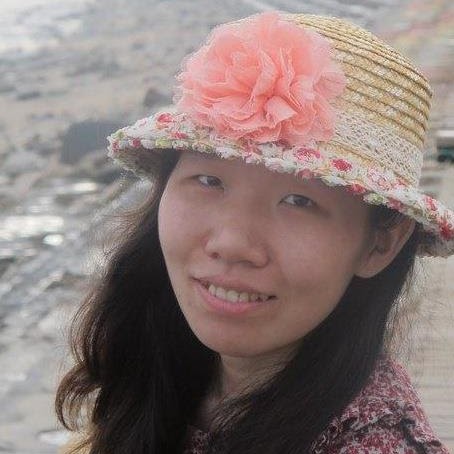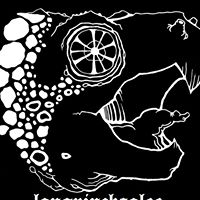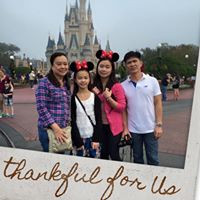Chao Li
age ~47
from Plano, TX
- Also known as:
-
- Cho Li
- Chao Lee
- Li Chao
- Li Cho
Chao Li Phones & Addresses
- Plano, TX
- Denton, TX
- Fremont, CA
- Charleston, IL
- Boca Raton, FL
- Mount Pleasant, MI
- Rochester, NY
- Saratoga, CA
- 41209 Denise St, Fremont, CA 94539
Work
-
Position:Sales Occupations
Education
-
School / High School:New York University, School of Law
Ranks
-
Licence:New York - Currently registered
-
Date:2009
Isbn (Books And Publications)


Medicine Doctors

Chao Li
view sourceName / Title
Company / Classification
Phones & Addresses
Secretary
Brantly International Inc
Aviation & Aerospace · Information Technology and Services · Mfg Aircraft · Aircraft Mfg
Aviation & Aerospace · Information Technology and Services · Mfg Aircraft · Aircraft Mfg
12399 Airport Dr, Vernon, TX 76384
621 S Royal Ln STE 100, Coppell, TX 75019
12399 Hamp Naylor Dr, Vernon, TX 76384
(940)5525451, (940)5522703, (972)8294632
621 S Royal Ln STE 100, Coppell, TX 75019
12399 Hamp Naylor Dr, Vernon, TX 76384
(940)5525451, (940)5522703, (972)8294632
OLEESHAN HOLDING LLC
100 Sunrise Ave 202, Palm Beach, FL 33480
100 Sunrise Ave #202, Palm Beach, FL 33480
100 Sunrise Ave #202, Palm Beach, FL 33480
MEBOOKS, LLC
Us Patents
-
Anomaly Detection For An E-Commerce Pricing System
view source -
US Patent:20220237670, Jul 28, 2022
-
Filed:Apr 15, 2022
-
Appl. No.:17/721594
-
Inventors:- Bentonville AR, US
Elham SHAABANI - Redwood City CA, US
Chao LI - San Carlos CA, US
Matyas A. SUSTIK - San Francisco CA, US -
International Classification:G06Q 30/02
G06K 9/62
G06Q 20/20
G06N 20/00
G06Q 10/06 -
Abstract:This application relates to apparatus and methods for identifying anomalies within data, such as pricing data. In some examples, a computing device receives data updates and selects a machine learning model to apply to the data update. The computing device may train the machine learning model with features generated based on historical purchase order data. An anomaly score is generated based on application of the machine learning model. Based on the anomaly score, the data update is either allowed, or denied. In some examples, the computing device re-trains the machine learning model with detected anomalies. In some embodiments, the computing device prioritizes detected anomalies for further investigation. In some embodiments, the computing device identifies the cause of the anomalies by identifying at least one feature that is causing the anomaly.
-
Multiple Spacer Patterning Schemes
view source -
US Patent:20230093450, Mar 23, 2023
-
Filed:Nov 30, 2022
-
Appl. No.:18/072457
-
Inventors:- Santa Clara CA, US
Rui CHENG - Santa Clara CA, US
Karthik JANAKIRAMAN - San Jose CA, US
Zubin HUANG - Santa Clara CA, US
Diwakar KEDLAYA - Santa Clara CA, US
Meenakshi GUPTA - San Jose CA, US
Srinivas GUGGILLA - San Jose CA, US
Yung-chen LIN - Gardena CA, US
Hidetaka OSHIO - Tokyo, JP
Chao LI - Santa Clara CA, US
Gene LEE - San Jose CA, US -
International Classification:H01L 21/033
H01L 21/311
H01L 21/3213 -
Abstract:The present disclosure provides forming nanostructures utilizing multiple patterning process with good profile control and feature transfer integrity. In one embodiment, a method for forming features on a substrate includes forming a first mandrel layer on a material layer disposed on a substrate. A first spacer layer is conformally formed on sidewalls of the first mandrel layer, wherein the first spacer layer comprises a doped silicon material. The first mandrel layer is selectively removed while keeping the first spacer layer. A second spacer layer is conformally formed on sidewalls of the first spacer layer and selectively removing the first spacer layer while keeping the second spacer layer.
-
Topology-Change-Aware Volumetric Fusion For Real-Time Dynamic 4D Reconstruction
view source -
US Patent:20210082192, Mar 18, 2021
-
Filed:Sep 11, 2020
-
Appl. No.:17/018707
-
Inventors:- Austin TX, US
Chao LI - Richardson TX, US -
International Classification:G06T 19/00
G06F 16/901
G06T 17/20 -
Abstract:A method for real-time dynamic 4D reconstruction can include detecting one or more topology changes between reconstructed frames and a new incoming frame by detecting a set of discontinuities in a first surface mesh associated with the reconstructed frames; duplicating cells of a first volumetric cell structure associated with the reconstructed frames at the set of discontinuities to generate a set of nodes, the set of nodes having a non-manifold connectivity; and fusing a depth image of the new incoming frame with the first volumetric cell structure having the set of nodes to form a next volumetric cell structure with the non-manifold connectivity. A next surface mesh extracted from the next volumetric cell structure can then be output for rendering a live frame.
-
Methods And Apparatus For Anomaly Detections
view source -
US Patent:20200380570, Dec 3, 2020
-
Filed:May 30, 2019
-
Appl. No.:16/427238
-
Inventors:- Bentonville AR, US
Elham SHAABANI - Redwood City CA, US
Chao LI - San Carlos CA, US
Matyas A. SUSTIK - San Francisco CA, US -
International Classification:G06Q 30/02
G06K 9/62
G06Q 10/06
G06N 20/00
G06Q 20/20 -
Abstract:This application relates to apparatus and methods for identifying anomalies within data, such as pricing data. In some examples, a computing device receives data updates and selects a machine learning model to apply to the data update. The computing device may train the machine learning model with features generated based on historical purchase order data. An anomaly score is generated based on application of the machine learning model. Based on the anomaly score, the data update is either allowed, or denied. In some examples, the computing device re-trains the machine learning model with detected anomalies. In some embodiments, the computing device prioritizes detected anomalies for further investigation. In some embodiments, the computing device identifies the cause of the anomalies by identifying at least one feature that is causing the anomaly.
-
Methods And Apparatus For Anomaly Detections
view source -
US Patent:20200380571, Dec 3, 2020
-
Filed:May 30, 2019
-
Appl. No.:16/427241
-
Inventors:- Bentonville AR, US
Elham SHAABANI - Redwood City CA, US
Chao LI - San Carlos CA, US
Matyas A. SUSTIK - San Francisco CA, US -
International Classification:G06Q 30/02
G06K 9/00
G06F 17/11
G06Q 10/06
G06N 20/00
G06Q 20/20 -
Abstract:This application relates to apparatus and methods for identifying anomalies within data, such as pricing data. In some examples, a computing device receives data updates and selects a machine learning model to apply to the data update. The computing device may train the machine learning model with features generated based on historical purchase order data. An anomaly score is generated based on application of the machine learning model. Based on the anomaly score, the data update is either allowed, or denied. In some examples, the computing device re-trains the machine learning model with detected anomalies. In some embodiments, the computing device prioritizes detected anomalies for further investigation. In some embodiments, the computing device identifies the cause of the anomalies by identifying at least one feature that is causing the anomaly.
-
Multiple Spacer Patterning Schemes
view source -
US Patent:20200335338, Oct 22, 2020
-
Filed:Mar 17, 2020
-
Appl. No.:16/821759
-
Inventors:- Santa Clara CA, US
Rui CHENG - Santa Clara CA, US
Karthik JANAKIRAMAN - San Jose CA, US
Zubin HUANG - Santa Clara CA, US
Meenakshi GUPTA - San Jose CA, US
Srinivas GUGGILLA - San Jose CA, US
Yung-chen LIN - Gardena CA, US
Hidetaka OSHIO - Tokyo, JP
Chao LI - Santa Clara CA, US
Gene LEE - San Jose CA, US -
International Classification:H01L 21/033
-
Abstract:The present disclosure provides forming nanostructures utilizing multiple patterning process with good profile control and feature transfer integrity. In one embodiment, a method for forming features on a substrate includes forming a mandrel layer on a substrate, conformally forming a spacer layer on the mandrel layer, wherein the spacer layer is a doped silicon material, and patterning the spacer layer. In another embodiment, a method for forming features on a substrate includes conformally forming a spacer layer on a mandrel layer on a substrate, wherein the spacer layer is a doped silicon material, selectively removing a portion of the spacer layer using a first gas mixture, and selectively removing the mandrel layer using a second gas mixture different from the first gas mixture.
-
Multiple Spacer Patterning Schemes
view source -
US Patent:20200335339, Oct 22, 2020
-
Filed:May 5, 2020
-
Appl. No.:16/867095
-
Inventors:- Santa Clara CA, US
Rui CHENG - Santa Clara CA, US
Karthik JANAKIRAMAN - San Jose CA, US
Zubin HUANG - Santa Clara CA, US
Diwakar KEDLAYA - Santa Clara CA, US
Meenakshi GUPTA - San Jose CA, US
Srinivas GUGGILLA - San Jose CA, US
Yung-chen LIN - Gardena CA, US
Hidetaka OSHIO - Tokyo, JP
Chao LI - Santa Clara CA, US
Gene LEE - San Jose CA, US -
International Classification:H01L 21/033
-
Abstract:The present disclosure provides forming nanostructures utilizing multiple patterning process with good profile control and feature transfer integrity. In one embodiment, a method for forming features on a substrate includes forming a first mandrel layer on a material layer disposed on a substrate. A first spacer layer is conformally formed on sidewalls of the first mandrel layer, wherein the first spacer layer comprises a doped silicon material. The first mandrel layer is selectively removed while keeping the first spacer layer. A second spacer layer is conformally formed on sidewalls of the first spacer layer and selectively removing the first spacer layer while keeping the second spacer layer.
Lawyers & Attorneys

Chao Li - Lawyer
view sourceAddress:
(891)0185396 (Office)
Licenses:
New York - Currently registered 2009
Education:
New York University, School of Law
Resumes

Chao Li San Jose, CA
view sourceWork:
AFFILIATION
Oct 2012 to 2000
Member, Accounting Association, UCSB ALLEN ASSOCIATES
Santa Barbara, CA
Jul 2013 to Aug 2013
Temporary Accounting Assistant CIB SECURITY
Sunnyvale, CA
Jun 2011 to Sep 2011
Technician American Marketing Association
Sep 2009 to May 2010
Member
Oct 2012 to 2000
Member, Accounting Association, UCSB ALLEN ASSOCIATES
Santa Barbara, CA
Jul 2013 to Aug 2013
Temporary Accounting Assistant CIB SECURITY
Sunnyvale, CA
Jun 2011 to Sep 2011
Technician American Marketing Association
Sep 2009 to May 2010
Member
Education:
University of California-Santa Barbara
Santa Barbara, CA
Mar 2013
Bachelor of Art in Economic and Accounting Ohlone College
Fremont, CA
Sep 2010 to May 2011
Business Administration Central Michigan University
Mount Pleasant, MI
Jan 2007 to May 2010
Bachelor of Science in Business Administration
Santa Barbara, CA
Mar 2013
Bachelor of Art in Economic and Accounting Ohlone College
Fremont, CA
Sep 2010 to May 2011
Business Administration Central Michigan University
Mount Pleasant, MI
Jan 2007 to May 2010
Bachelor of Science in Business Administration

Chao Li Santa Barbara, CA
view sourceWork:
AFFILIATION
Oct 2012 to 2000
Member, Accounting Association, UCSB CIB SECURITY
Sunnyvale, CA
Jun 2011 to Sep 2011
Technician American Marketing Association
Sep 2009 to May 2010
Member Real Food on Campus
Mount Pleasant, MI
Jun 2007 to Sep 2007
Server
Oct 2012 to 2000
Member, Accounting Association, UCSB CIB SECURITY
Sunnyvale, CA
Jun 2011 to Sep 2011
Technician American Marketing Association
Sep 2009 to May 2010
Member Real Food on Campus
Mount Pleasant, MI
Jun 2007 to Sep 2007
Server
Education:
University of California-Santa Barbara
Santa Barbara, CA
Mar 2013
Bachelor of Art in Economic and Accounting Ohlone College
Fremont, CA
Sep 2010 to May 2011
Business Administration Central Michigan University
Mount Pleasant, MI
Jan 2007 to May 2010
Bachelor of Science in Business Administration
Santa Barbara, CA
Mar 2013
Bachelor of Art in Economic and Accounting Ohlone College
Fremont, CA
Sep 2010 to May 2011
Business Administration Central Michigan University
Mount Pleasant, MI
Jan 2007 to May 2010
Bachelor of Science in Business Administration
Skills:
MS Word, Excel, Powerpoint, Chinese&English
Myspace
Googleplus

Chao Li
Work:
Alcatel-lucent - Software consultant engineer

Chao Li
Work:
IHealth Lab Inc - App product manager (2008)
Education:
Tianjin university

Chao Li

Chao Li
Education:
University of California, San Diego - Computer Science
Tagline:
My eyes are greedy

Chao Li
Education:
Xiamen University

Chao Li
Education:
University of California, Irvine - EECS, University of Technology and Science Beijing - EECS

Chao Li

Chao Li
Tagline:
Viva la vida..
Flickr
Plaxo

Chao Li
view sourcePh.D at CWI

Chao Li
view sourceMD at SUNY Downstate Medical Center
Classmates

Chao Li
view sourceSchools:
Guillaume Vignal School Brossard Kuwait 1993-1997, La Mennais High School La Prairie Kuwait 1997-2002, River of Meadows High School Montreal Kuwait 1998-2002
Community:
Annie Pommainville, Jonathan Ghali, Emilie Paul, Genevieve Hamelin, Julie Lavallee, Virginie Vincent, Stephanie Caron, Amelia Lavoie

Guillaume Vignal School, ...
view sourceGraduates:
Chao LI (1993-1997),
Tania Vincent (1988-1992),
Vincent Fournier (1995-1999),
Pain Your (1985-1989),
Henry Pierre (1982-1986)
Tania Vincent (1988-1992),
Vincent Fournier (1995-1999),
Pain Your (1985-1989),
Henry Pierre (1982-1986)

President Thomas Jefferso...
view sourceGraduates:
Chao Li (1974-1980),
Michael Henry (1977-1978)
Michael Henry (1977-1978)

River of Meadows High Sch...
view sourceGraduates:
Lyson Gosselin (1976-1980),
Chao Li (1998-2002),
Mathieu Sauvageau (2000-2004),
Genevive BAril (1997-2001),
Martine Delisle (1984-1989)
Chao Li (1998-2002),
Mathieu Sauvageau (2000-2004),
Genevive BAril (1997-2001),
Martine Delisle (1984-1989)

Morrow High School, Brook...
view sourceGraduates:
da Chao LI (1990-1994),
Irina Markovskaya (1997-2001),
Michael Piccirillo (1973-1977),
Yan Volodarsky (1996-2000)
Irina Markovskaya (1997-2001),
Michael Piccirillo (1973-1977),
Yan Volodarsky (1996-2000)

South Harrison High Schoo...
view sourceGraduates:
Tomi Standage (2004-2008),
Christy Galvan (1986-1990),
Shanda Maxwell (1979-1983),
Chao LI (2002-2006),
Champagne Murphy (2000-2001)
Christy Galvan (1986-1990),
Shanda Maxwell (1979-1983),
Chao LI (2002-2006),
Champagne Murphy (2000-2001)

Edward Bleeker Junior Hig...
view sourceGraduates:
Jian Chao LI (1995-1999),
Danny Luk (1976-1978),
John McCready (1988-1992),
Rachel Schiffman (1988-1990)
Danny Luk (1976-1978),
John McCready (1988-1992),
Rachel Schiffman (1988-1990)

Walnut Grove High School,...
view sourceGraduates:
Cody Sullivan (2004-2006),
chao LI (1997-2001),
Stephen Schneider (2001-2005),
Tj Code (2001-2005),
Jeremy Schmidt (1993-1997)
chao LI (1997-2001),
Stephen Schneider (2001-2005),
Tj Code (2001-2005),
Jeremy Schmidt (1993-1997)
Youtube

Chao Li
view source
Chao Li
view source
Chao Li
view source
Chao Neng Li
view source
Chao Yang Li
view source
Alexhuang Chao Li
view source
Chao Mei Li
view source
Chao Li
view sourceGet Report for Chao Li from Plano, TX, age ~47

















